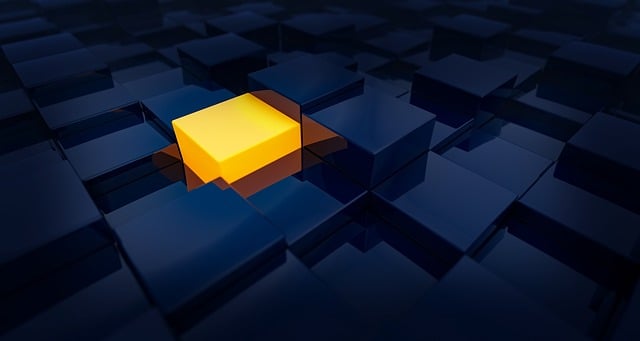In today's digital era, Mobile-Friendly Design is a critical requirement for businesses aiming to reach a vast audience across all devices. With nearly every internet user relying on smartphones and tablets, creating intuitive, responsive websites with easy navigation, clear CTAs, and concise content ensures higher engagement, better conversion rates, and improved SEO rankings. The choice between Responsive Web Design (RWD) and Dedicated Mobile Apps depends on budget and desired interactivity. Key tools like HTML5, CSS3, JavaScript, Bootstrap, and Foundation simplify development. Optimizations such as responsive imaging, media queries, lazy loading, and performance testing enhance user experience and speed. Looking ahead, AI personalization, VR/AR immersion, and further advancements in Mobile-Friendly Design promise more intuitive and interactive mobile sites.
In today’s mobile-first world, understanding and implementing effective mobile-friendly design is no longer an option but a necessity. This article delves into the core principles of creating engaging, high-performing mobile site layouts that cater to users’ evolving expectations. We explore key concepts, compare responsive web design to dedicated apps, highlight essential tools, and discuss optimizing user experience along with performance considerations. Get ready to navigate the future trends shaping mobile site development for ultimate success in the digital landscape.
Understanding Mobile-Friendly Design: The Need of the Hour

In today’s digital era, mobile-friendly design is no longer a luxury but a necessity. With the majority of internet users accessing websites through their smartphones and tablets, ensuring your site provides an optimal user experience across all devices has become crucial for any business or organization. Mobile-friendly design isn’t just about making your website accessible; it’s about enhancing user engagement, improving conversion rates, and staying competitive in the market.
A well-designed mobile site should be intuitive, easy to navigate, and optimized for fast loading times. This involves simplifying complex information, utilizing responsive layouts that adjust seamlessly to different screen sizes, and ensuring all functionalities work flawlessly on mobile devices. By embracing mobile-friendly design, businesses can tap into a vast audience, offer personalized experiences, and ultimately drive business growth in an increasingly mobile-centric world.
Key Principles for Creating Effective Mobile Site Layouts

Creating effective mobile site layouts requires adhering to key principles that ensure a seamless user experience. First and foremost, embrace a mobile-friendly design philosophy. This means prioritizing content accessibility and usability on smaller screens by employing responsive web design techniques. Layouts should adapt gracefully across various device sizes and orientations, ensuring that every element is easily readable and interactable with thumbs and fingers.
Use intuitive navigation, clear call-to-actions (CTAs), and a hierarchical information architecture to guide users through the site. Mobile users often have limited attention spans and short patience, so keep interactions simple, fast, and straightforward. Efficient use of white space, concise content, and visual hierarchy help in making the most of smaller screens, ensuring your mobile site is not only functional but also aesthetically pleasing.
Responsive Web Design vs. Dedicated Mobile Apps: What's Best?

When it comes to creating a digital presence for businesses, the debate between Responsive Web Design (RWD) and Dedicated Mobile Apps is an ongoing one. RWD offers a flexible approach by allowing websites to adapt seamlessly to various screen sizes and devices, ensuring a consistent user experience across desktops, tablets, and smartphones. This method is particularly appealing as it provides a cost-effective solution for businesses looking to have a single website that caters to all users. With modern advancements in technology, RWD has become highly efficient, leveraging media queries and flexible layouts to deliver an optimal viewing experience.
On the other hand, Dedicated Mobile Apps provide native functionality and performance tailored specifically for mobile platforms. They offer enhanced user interfaces, seamless navigation, and can take advantage of device-specific features like GPS and camera access. While developing dedicated apps requires additional resources and time, they often provide a more immersive and interactive experience for users. The choice between RWD and dedicated apps depends on various factors, including budget, target audience, and the level of interactivity required for the specific project.
Essential Tools and Technologies for Mobile Site Development

In the realm of mobile site development, several essential tools and technologies play a pivotal role in crafting mobile-friendly designs. HTML5, CSS3, and JavaScript are fundamental to building responsive websites that adapt seamlessly across various devices. These languages enable developers to create dynamic layouts, ensuring content appears consistent and functional on smartphones, tablets, and desktops alike.
Additionally, frameworks like Bootstrap and Foundation streamline the development process by offering pre-designed components and grid systems, facilitating the creation of mobile-optimized interfaces. Responsive image techniques, media queries, and flexible CSS grids are crucial for achieving a mobile-friendly design, enhancing user experience, and improving search engine optimization (SEO) rankings in today’s digital era.
Optimizing User Experience on Small Screens

Creating a mobile-friendly design is paramount in modern web development, as users increasingly access websites via their smartphones and tablets. Optimizing for small screens involves more than just shrinking content; it’s about adapting layouts, streamlining navigation, and prioritizing user interactions to ensure a seamless experience on mobile devices. Techniques like responsive design, where a website dynamically adjusts its layout based on the screen size, are essential tools.
Additionally, simplifying call-to-action buttons, using touch-friendly interfaces, and optimizing images for faster loading times can significantly enhance usability. Mobile users often have limited data plans or slower internet speeds, so efficient coding practices, minification of resources, and leveraging cloud services for content delivery can help reduce load times, leading to higher user satisfaction and engagement.
Performance Considerations for Faster Mobile Loading Times

When developing a mobile site, performance considerations are paramount to ensure faster loading times. Optimizing for speed means employing strategies like minimizing HTTP requests, leveraging browser caching, and compressing assets (images, CSS, JavaScript). A mobile-friendly design approach, adhering to Google’s Mobile-Friendly Test guidelines, is essential. This involves responsive layouts that adapt gracefully across various screen sizes and ensuring fast page rendering on slower networks.
Further enhancements include utilizing content delivery networks (CDNs) for faster content distribution and optimizing images without sacrificing quality. Lazy loading of offscreen or low-priority content can also improve initial load times significantly. Additionally, regular performance testing and optimization keep the site agile and ensure a seamless user experience on the go.
Future Trends Shaping Mobile Site Development

As technology continues to evolve, several future trends are set to shape mobile site development. One prominent trend is the increasing emphasis on mobile-friendly design, with a shift towards responsive web design that adapts seamlessly across various devices and screen sizes. This ensures that users, regardless of whether they’re on a smartphone, tablet, or wearable device, have an optimal browsing experience.
Additionally, advancements in artificial intelligence (AI) and machine learning are expected to play a significant role. AI-powered personalisation can tailor content and functionality based on user behaviour and preferences, enhancing user engagement. Virtual reality (VR) and augmented reality (AR) technologies also hold promise for creating immersive experiences that bridge the gap between physical and digital interactions. These trends collectively point towards more intuitive, interactive, and personalised mobile sites in the future.
